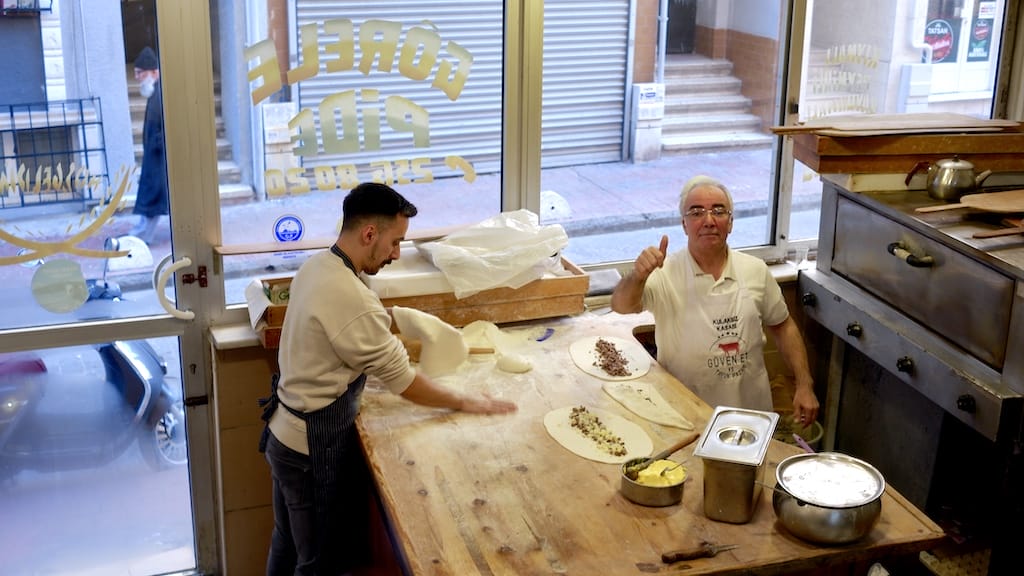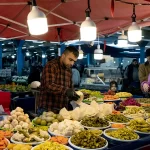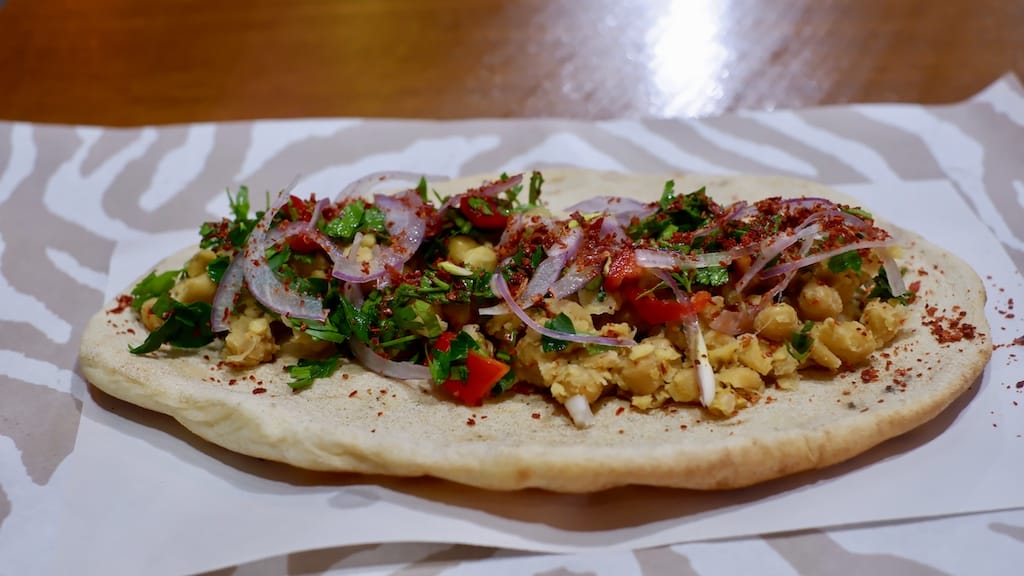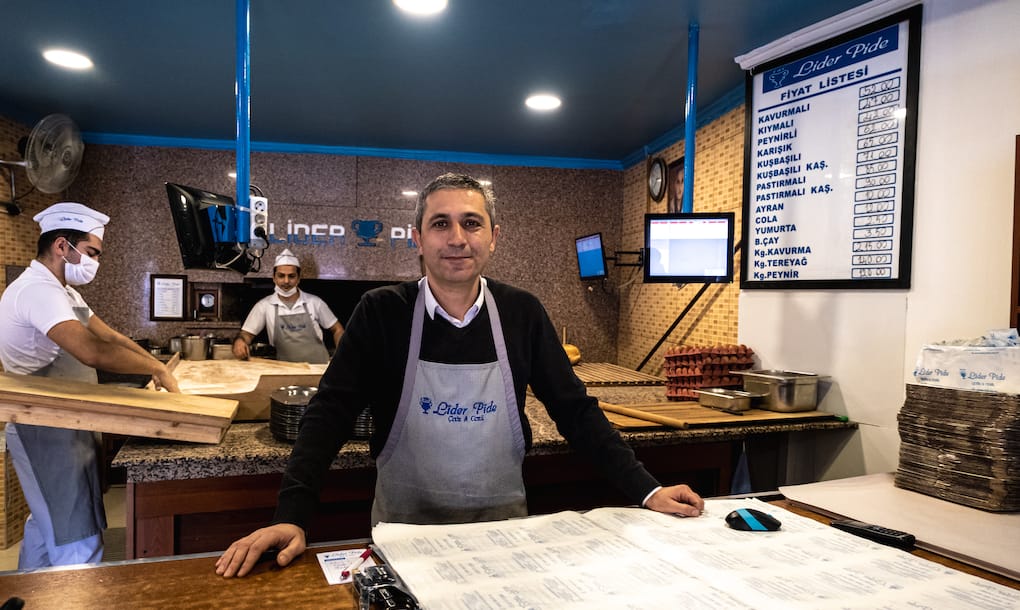In the steep hillside Kulaksız section of the Beyoğlu neighborhood, Şakir Sefer nimbly weaves dough stuffed with small piles of kıyma (ground beef) or strips of pastırma (cured, spiced beef) into the shape of a canoe before sending it into the flame-licked depths of a massive stone oven.
It’s after lunch rush but things are still busy at Görele Pidecisi, a classic shop that specializes in Black Sea-style pide, different configurations of baked decadence in which meat and cheese mingle as the dough cooks, only to be enriched with a dollop of yellow butter that melts quickly and a whole egg that reaches over-easy on its own in the heat of the toppings.
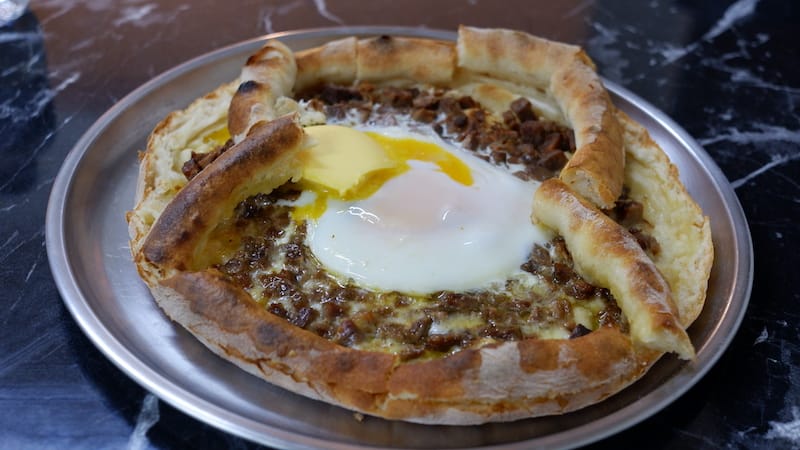
Şakir usta’s son Kadir quickly rolls out round piles of dough on the counter for his father to assemble, and when the bread boats emerge from the oven, the elder Sefer makes a thin slice in the top of each and cracks the egg inside with one hand. We’ve come with an empty stomach and have to wait for about half an hour as many to-go orders have already been called in. Our stomachs were grumbling but it became clear it was worth the wait when our pide made its glorious appearance. This one was circular-shaped like a small, plump pizza and stuffed with kaşar cheese and kavurma (braised beef). Not getting the generous heap of fresh butter is out of the question, while the egg is optional. We allowed our pide to cool off a bit while we tried to solve a camera issue, then went all in.
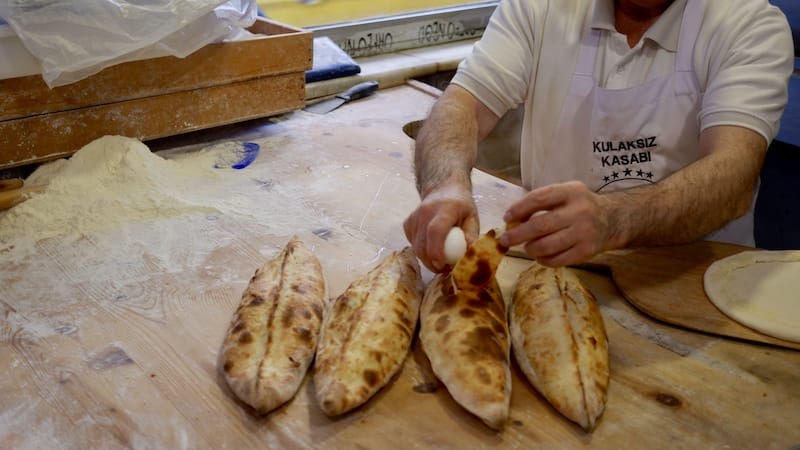
Görele is a district in the Black Sea province of Giresun and is Sefer’s hometown. It’s pide country out there, where the cuisine is simple yet hearty, ingredients limited but high in quality. Sefer came to Istanbul in 1974 at the age of 13, and at that point had already been making dough for two years, starting with his older brother when he was in the fifth grade. Sefer explained that apprenticeship has to start from a young age and that it is much more difficult for someone to pick up the trade once they reach their mid to late teens.
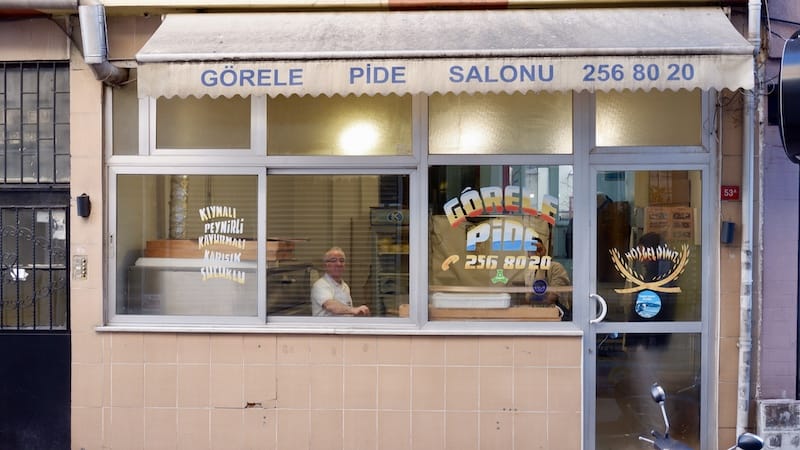
It has now been 52 years since Sefer embarked on the craft that became a labor of love, resulting in the best pide we’ve had in Istanbul, and perhaps anywhere else. In the pide we ordered, cubes of kavurma match harmoniously with the melted cheese, and as the single egg transitions from raw into over-easy, the whites ooze with the melted butter before we take a chunk of the crust and stab it into the yolk, sopping up all the toppings in one bite. The dough has equal parts crunch and chew, and absorbs the ingredients seamlessly. The punch of flavor and tastiness did not diminish as the pide – which we ate slowly – cooled down.
“You have to play with the dough, refine the dough. Dough that is refined is like honey,” Sefer said enthusiastically. He didn’t skimp on the ingredients, and we were especially impressed by the satisfyingly savory yet not-excessively rich taste of the kavurma.
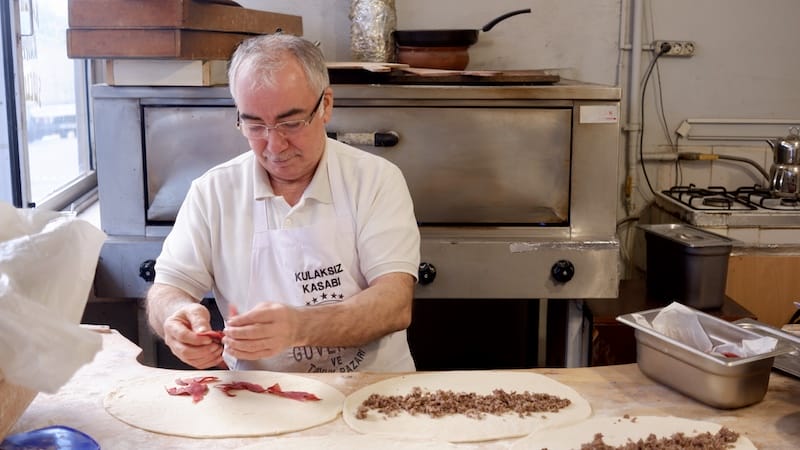
“It’s pure beef from a young bull. It can’t come from cattle, because meat from an animal that has not given birth is tastier,” Sefer explained. He sources all of his meat and dairy from the highlands of Giresun, any other way would be out of the question.
A troubling trend that we’ve observed and written about time and time again is aging ustas – “masters” – like Sefer retiring, and not passing the baton to their children because they either don’t want them to toil in the kitchen, or the kids themselves opt to pursue higher education, an opportunity their parents were not fortunate enough to have. This has created an Istanbul that may soon lack the masters who have fed the city for decades. But at Görele Pidecisi, we were delighted to find out that this is not the case.
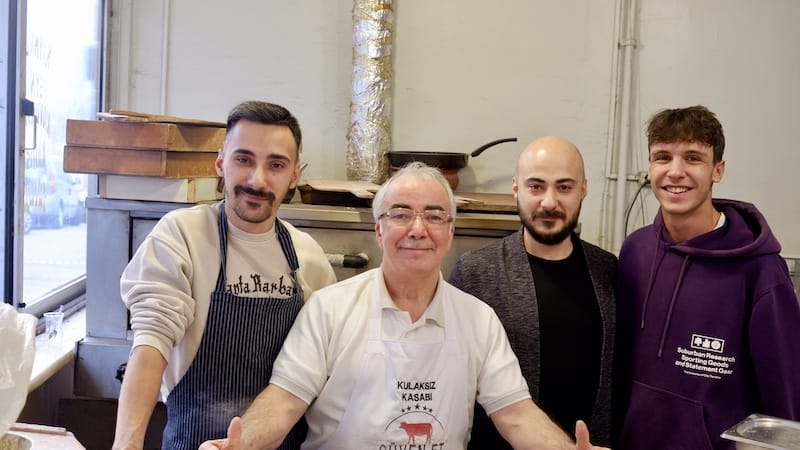
“Let me tell you this – my children are following in their father’s footsteps,” Sefer said, adding that his three sons all studied at university but afterward chose to work at the pide shop. The current restaurant has been open for 24 years, though Sefer has worked in Kulaksız for 47 years. The vast majority of the neighborhood knows him. After more than half a century, one might think that Sefer would be tired of shaping dough to perfection, but the opposite is true: he remains passionate about the essential foundation of a great pide.
“When dough is kneaded it does not yet become dough. You have to let it rest for two hours. It’s going to become dough, and in an hour the yeast starts to rise. The dough here that has rested is a thing of beauty,” Sefer said. This rings particularly true when the toppings are added and it exits the oven in a complete and perfect form – perhaps not the best meal for the arteries, but one that soothes the heart.
Published on March 26, 2024
Related stories
May 4, 2023
IstanbulIstanbul's western suburb of Küçükçekmece is flanked by a small lake of the same name, the water of which flows from a river in the north and out into the Marmara Sea in the opposite direction. The coastline of the lake is just steps away from a train that stops at the foot of the…
April 25, 2022
IstanbulRoaming the streets of Istanbul at 8:30 a.m. on a Sunday can be a surreal experience. The sun is shining, the seagulls are bellowing as they dip and dive – but the normally bustling streets are quiet. A few shops might be lifting their shutters, and cafés in younger neighborhoods may only just be putting…
March 30, 2022
IstanbulQuick bite: Far from the tourist trail, get a taste of one of the last bastions of classic Istanbul flavors, including bread fresh from the tandir oven, a mind-boggling assortment of meze, sizzling kebab, old school ice cream and much more. On this full-day food tour, we will dig deep into the culinary traditions of…







































